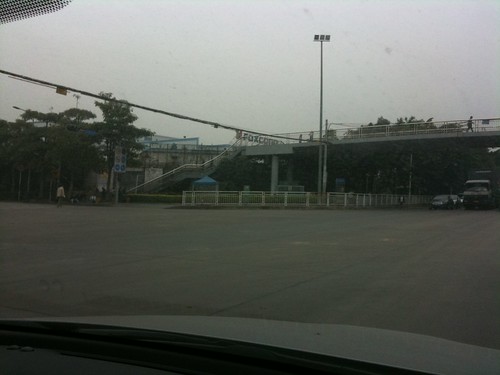September 2025 introduction – (26) pick-and-mix edition
Where has the year gone? I am just thankful that we got a little bit of sun, given how fast and hard the autumn wind and rain came in this year. I am now at issue 26, or as a bingo caller would put it ‘pick and mix’.
When I was a child ‘pick-and-mix’ sweets were a way of getting maximum variety for the lowest amount of pocket money that I earned from chores. Woolworths were famous at the time for their pick and mix section, alongside selling vinyl records and cassettes. Woolworths disappeared from the UK high street during the 2008 financial crisis.
For Mandarin Chinese speakers 26 is considered ‘lucky’ given that it sounds similar to ‘easy flow’ implying easy wealth.
This month’s soundtrack has been a banging digital compilation put together by Paradisco and Disco Isn’t Dead featuring The Reflex, PBR Streetgang, Prins Thomas, J Kriv, Sergio Mendes & Brasil 66.
Right, let’s get into it.
New reader?
If this is the first newsletter, welcome! You can find my regular writings here and more about me here.
Things I’ve written.
- Decoding the complex and contradictory data around crime and its likely impact on consumer opinions.
- A post that took me too long to write about the favourite campaigns I had when on the jury of the PHNX awards.
- I missed sharing a post I wrote last month that built on the work of Rob Estreitinho on ideas for being a good strategist.
Books that I have read.
- I finished Moscow X by David McCloskey. (No plot spoilers). This is the second book my McCloskey after Damascus Station, which I read and enjoyed back in May last year. The book is like a more action-orientated American version of a LeCarré novel. The plot reminded me of LeCarré’s Single & Single and Our Kind of Traitor. McCloskey isn’t afraid to have strong female lead characters in his book.
- Your Life is Manufactured by Tim Minshall. Minshall is a professor at Cambridge and heads up the engineering department’s manufacturing research centre. Because of his mastery of the subject area, he manages to provide an exceptionally accessible primer in terms of what manufacturing is, how it happens and what it means. More about it here.
Things I have been inspired by.
Election-winning opacity in influencer relations
I have been following Taylor Lorenz‘ work since she became the beat reporter for online culture and technology at the Business Insider. Her article for Wired magazine on how the Democratic Party in the US is working with paid influencers makes for an interesting read.
What would be the norm in the commercial world about influencer transparency where there is a paid relationship – isn’t happening in politics.
Ok, why does this matter? The reason why I think this matters is that people who do their time in the trenches of a presidential election campaign have a clear path into a number of American agencies.
‘I’ve have won a victory for X candidate and can do the same for your brand’ has been a popular refrain for decades in agencies.
I have been in the room when senior American agency people have tried to convince Chinese companies to buy their services based on their success in marketing a candidate in an election using western social media channels. There was no sense of irony when this was awkwardly delivered as a possible solution for domestic market campaigns to marketing teams in Guangzhou, Shenzhen and Shanghai.
Bad habits will be brought into agencies and sold on to clients.
Chart of the month.
Kim Malcolm shared a great report done by Zappi and VaynerMedia looking at The State of Creative Effectiveness 2025. Two charts piqued my interest. The change in distinctiveness of advertising by age cohort.
The overall emotion that an advert evokes by age cohort.
Causality of these effects aren’t clear. Empirically, I know that great adverts still put a smile on the faces of people of all ages and can change brand choice, even in the oldest consumers.
I had more questions than answers. VaynerMedia thought that the answer should be cohort-specific campaigns. I am less sure, since brands tend to better within culture as a common point of truth for everyone. Also, I don’t believe in leaping to a solution until I understand the underlying ‘problem’.
I could understand a decline in novelty as people gain decades of life experience and will have seen similar creative executions before.
Are the adverts lacking a foundation in strong cultural insights and cues that would resonate with these older audience cohorts?
What I did notice is a correlation with the age profile in advertising agency staff compared to the general public and the point at which the drop-off to occurs. But correlation doesn’t necessarily imply causation.
It’s concerning that advertising effectiveness declines in older audience cohorts as economic power skews older within the general population. This is likely to continue as millennials inherit wealth from their baby boomer relatives as they enter their 50s and 60s. Which makes the old marketer line about half of a consumers economic value is over by 35 seem hollow.
Things I have watched.
Ghost In The Shell Arise: Border 1 and Border 2. In the GITS storyline this is a prequel to the original film. It follows how the eventual team comes together. The technology looks less fantastical and more prophetic each time I watch it. The animation is still spectacular.
Ghost In The Shell Arise: Border 3 and Border 4. Following on from Border 1 and Border 2, this has Togusa and the Section 9 team following the same case from different ends – which eventually has Togusa joining Section 9 as its only unaugmented team member.
I bought up as many of the films I could in Johnnie To’s filmography after he criticised Hong Kong’s national security regulation in an interview, which was likely to be the kiss of death to his film career. I finally got around to watching one of his best known films PTU and the series of Tactical Unit films that came from the same universe.
PTU: One of the paradoxes of Hong Kong is the prevalence of triad and corruption dramas, compared to the real life which whilst not crime and corruption free is much more staid. Hong Kong is as different from its cinematic counterpart, as the UK is to Richard Curtis’ films. PTU like Akira Kurosawa’s Stray Dog is based around the search for a missing police pistol. PTU (police tactical unit) officers look to help out a detective from the OCTB (organised crime and triad bureau). While the film occurs over one night, it was actually shot over three years and is one of Johnnie To’s best known films. Shooting only at night, To provided the audience with a familiar, yet different, cinematic experience. The washed out colours of day time Hong Kong is replaced by vibrant signage and the sharp shadows defined by the street lighting. Officers walking with a street lamp lit Tom Lee music instrument store behind them, look like its from a John Ford scene in composition. Some of his tracking shots, due to the framing of photography and the distortions of the night give an almost Inception like feeling to the geography of Hong Kong streets, warping the horizon between buildings the night sky. PTU was successful internationally and then spawned, five further films from the same universe made in 2008 and 2009.
Tactical Unit: The Code was a one of a series of Tactical Unit sequels to Johnnie To’s PTU. In The Code several plot lines come together. The investigation of CCTV footage of officers beating up a triad , a police officer heavily in debt due to negative equity on his mortgage and a drug deal gone wrong. All this plays out in the Kowloon area of Hong Kong. When this film was made back in 2008, it would have been considered well done, but largely unremarkable. Nowadays it couldn’t be made as it would in breach of the National Security Law. The irony is that this film is available on the iQiyi streaming service from mainland China.
Tactical Unit: Human Nature loses some of the cinematic feel of PTU. It’s not as masterful a film , BUT, the convoluted threads of the plot and the great cast who are now completely comfortable in their characters make it work well.
Tactical Unit: No Way Out. No Way Out starts with an impressive screne shot in Temple Street market. The film explores the Temple Street area of Kowloon and organised crime links to everything from cigarette smuggling to drugs.
Tactical Unit: Comrade in Arms is the penultimate in the series from the PTU universe of films. You still have the main cast of Hong Kong veterans Lam Suet, Simon Yam and Maggie Shiu. Plain clothes officer Lo Sa has been demoted to wearing a uniform and both Mike Ho and Sergeant Kat’s squads are still patrolling the Kowloon side of Victoria harbour. This sees the stars leave their usual urban beat and go into the hills of the New Territories after bank robbers. Much of it occurs in daylight, which sets it apart from the night time beat of PTU. Nowadays it couldn’t be made as it would in breach of the National Security Law. The irony is that this film is available on the iQiyi streaming service from mainland China.
Tactical Unit: Partners. Partners is unusual in that it revolves around the challenges of the ethnic minorities that make up Hong Kong from romance fraud ensnaring filipina workers to discrimination against Indians and Nepalis. While some of the show happens during late on in the day, it still captures much of the night time feeling of the universe
2001 Nights is a 3D anime. While I admire the ambition and the technical expertise that went into the models, the characters as CGI fall down and distract from the storytelling. Also it felt weirdly like Space 1999 – and not in a good way.
Her Vengeance is a Hong Kong category III revenge movie filmed in 1988 that 88 Films recently release on Blu Ray. It borrows from another Hong Kong film in the early 1970s and I Spit On Your Grave. Despite being an low budget exploitation film it features a number of notable Hong Kong actors, probably because it was a Golden Harvest Production.
I found the film interesting because its opening was shot at Stanley Ho’s iconic Casino Lisboa in Macau. This was unusual because Hong Kong had lots of nightclubs that would have been fine for the protagonists management role without the hassle of the additional travel and government permissions. So we get a rare late 1980s snapshot of the then Portuguese colony.
When The Last Sword Is Drawn is a classic chambara (samurai sword-play) movie. It tells the complex story of a samurai, who unable to support his family on his meagre income as a school teacher and fencing master, turns his back on his clan and leaves to find work in Kyoto. Once in Kyoto he becomes embroiled in the battle between the declining Takagawa Shogunate and the Imperial Royal Family during the 19th century. Whilst the film does contain a lot of violence, it is used as a backdrop to the humanity of the main character and battles he faces between providing for his family and doing the honourable thing.
The plot is told through the recollections of others and finishes with the samurai’s youngest daughter getting ready to leave Japan with her husband and set up a doctor’s surgery in Manchuria (China).
Useful tools.
Playing Blu-Ray discs on a Mac
I have a Blu Ray player in my home theatre that enjoy using in lieu of subscribing to Netflix, which allows to me to explore more art house content than I can stream. Macgo Mac Blu Ray Player Pro gives your Mac the software capability that Steve Jobs wouldn’t.
One final thing, if you prefer to use Substack, you can now subscribe to this newsletter there.
The sales pitch.
I am currently working on a brand and creative strategy engagement at Google’s internal creative agency. I am now taking bookings for strategic engagements from the start of 2026 – keep me in mind; or get in touch for discussions on permanent roles. Contact me here.

More on what I have done here.

The End.
Ok this is the end of my September 2025 newsletter, I hope to see you all back here again in a month. Be excellent to each other and get planning for Hallowe’en.
Don’t forget to share if you found it useful, interesting or insightful.
Get in touch























